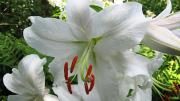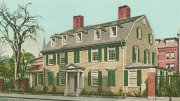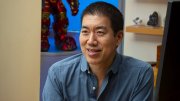How do the petals of the white Asiatic lily form and unfurl to become a flaring trumpet? This is the sort of question most people never even think to ask—and if they did ask, might quickly abandon as either insurmountably complex or too trivial to consider. But fundamental and easily overlooked questions fascinate Valpine professor of mathematics Lakshminarayanan Mahadevan. (See his "Applied Math" laboratory website, too.)
Working with Haiyi Liang, formerly a postdoctoral fellow at the School of Engineering and Applied Sciences (SEAS) and now a professor at the University of Science and Technology of China, in Hefei, Mahadevan discovered that rapid growth in cells at the periphery of the petals leads to wrinkle-induced stress within the flower bud that forces it open and drives the subsequent development of the blossom. The discovery has connections to earlier work by Mahadevan on ruffles at the edges of kelp, and, by analogy, to crochet and to the way the brain folds during development, as described in "The Physics of the Familiar," a feature article about his work from Harvard Magazine's archives; see also the associated video of Mahadevan's discoveries.
As former SEAS dean Venkatesh Narayanamurti has said of him, “Maha is not only a tremendous applied mathematician, he truly is a kind of Renaissance thinker. Is he an applied mathematician? Is he an engineer? Is he a computational biologist? Or is he an applied physicist? He is all of the above.”









